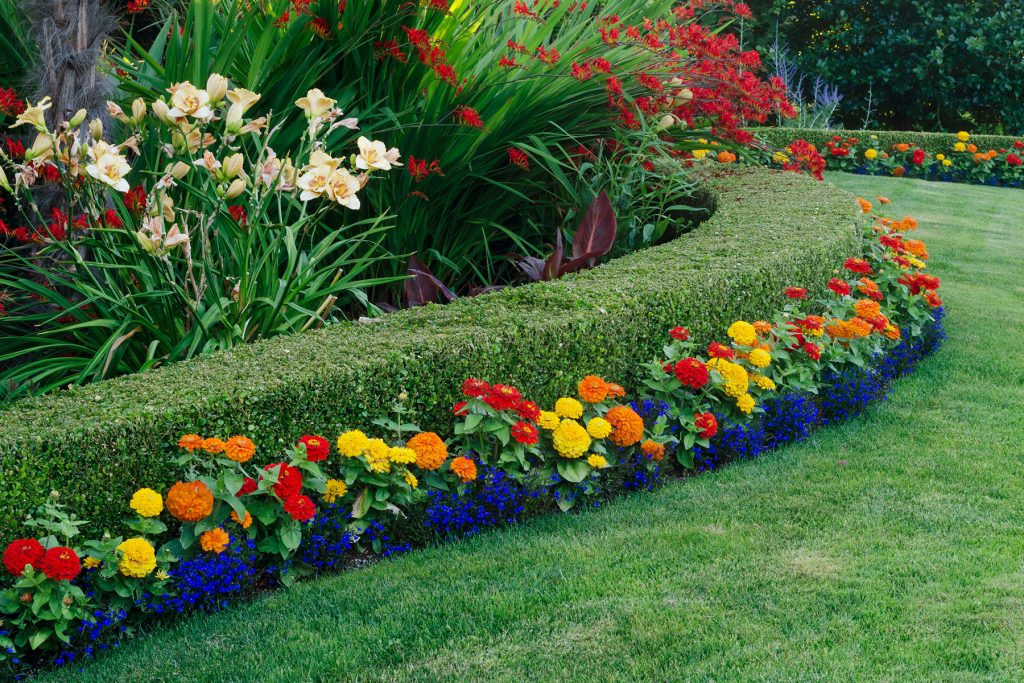Many elements make up a well-planned garden landscape, such as flower texture, structure, and scent. However, when designing your garden, you should consider color. Colors are an amazing way to add beauty to your landscape, as well as improve the feel and look of your home. Based on the primary colors on the artistic color wheel, many color patterns and designs can be constructed to give your garden the unique appeal that you desire.
There are as many ways to use color in the garden as there are gardens. When planning a bed or container, think about the impact you want that area to have. Are you looking for something relaxing and peaceful, or are you leaning toward something dazzling and intense? Are you going for a more open and spacious feel, or are you hoping for intimate and contained? Are you hoping to showcase the main entry for your home? The colors you choose are one of the ways you can achieve your goal. The tips outlined below can help you in using colors effectively in your garden.
- Employ Bright Colours
Bright colors are known to catch the eye the fastest, so using them in your garden can be a good starting point in designing your garden. Shades of yellow, red and orange are very eye-catching and attention-grabbing. They can be used as focal points for your garden. They also mix well with other colors and can be used to direct attention away from objects in your garden that are not so flattering, like a trashcan for instance.
- Layered Planting
Another way to use color effectively in your garden is to plant in layers. Layered planting helps to create streaks of colors that run horizontally. It also helps to add structure and depth to your garden. For instance, you can use lace-cap hydrangeas to create a warm blue and pink strip in your garden. You can then choose to add a swath of yellow and orange flowers underneath, as well as a band of lavender flowers to provide a base.
- Plant in Groups
When flowers are in large groups, they make more of an impact than when they are in little clusters. Large groups of a single hue when properly coordinated can bring large drifts of colors to your garden. However, a trick to doing this is to use a single plant or planting groups of different plants with the same shade or something similar, so that they all bloom at the same time. A widening swath of a combination of red and blue flowers can help to create a unique visual crescendo across your landscape.
- Pair Flowers with Structures
You can add a dose of visual thrill and excitement to your garden by pairing garden structures such as garden sheds and fences, with flowers. This can be of an added advantage to you if you live in a wintery or snowy climate. If you have a blue fence, you can complement it with vibrant Asclepias Tuberosa and perennial geraniums to give your garden a brilliant selection of colors.
- Lighten Up Dark Spots
Create drama in shady spots by adding Chartreuse. In dark areas or corners of your garden, you can plant flowers like creeping Jenny or Japanese forest grass to brighten up shady spots and act as a ray of sunshine. Evergreens with foliage can also be used to lighten up areas which experience gray skies during winter.
When it comes to using color effectively in the garden, the tips mentioned above can aid you. However, when you hire a professional landscaper, such as Levys Lawn & Landscaping, you will be introduced to many more options and ideas that you can choose from. You can contact us anytime to guide you in selecting the right color combination to make your garden landscape breathtaking.
